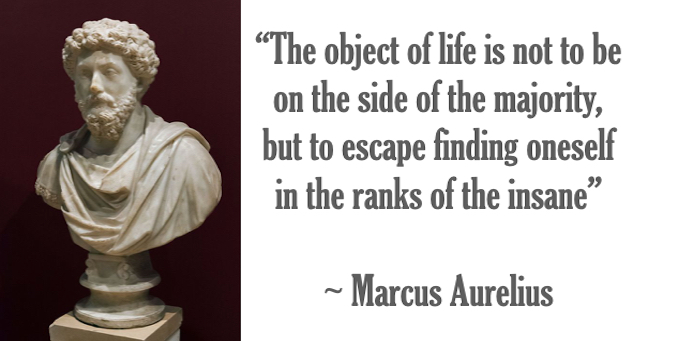“I won’t be a rock star. I will be a legend.” ~Freddie Mercury – front man of Queen
By Nina Heyn, Your Culture Scout
Every autumn, various big, showpiece movies that start popping up in cinemas with attendant publicity blitz do not have anything in common other than the fact that they have been groomed for a Fall debut as Oscar-hopefuls. They usually get premiered at one of the fall festivals, often Venice or Toronto (or both) and subsequently they open in the US, marking the start of the Oscar race.
The first few possible contenders are out so let’s take a look at them.
Every generation seems to have its own version of A Star is Born. The original was invented by a group of classic Hollywood screenwriters in the days where solid storytelling was a base of any good movie because neither low-tech special effects nor theatrical-style of acting would be enough. These days a lot of CGI and global marketing can make even a mediocre story into a major artistic success but in the golden years of old Hollywood you had to start with a good script. The story has been brought to screen four times: the 1937 original starred Janet Gaynor and Fredric March in their Technicolor debut, the 1954 edition starred James Mason and Judy Garland and it has been considered a classic, the 1975 edition shifted the story from the world of movie stardom to the music scene starring the biggest performers of the era: Barbra Streisand and Kris Kristofferson. This year’s version stays in the music setting but, luckily, is a much improved attempt at telling the same tale of two performers at opposite trajectories of stardom.
Bradley Cooper stars as an old-school rocker (the Kris Kristofferson version was all country music but this has been updated to something more appealing to younger audiences) who still fills stadium-size concert venues but who is having trouble delivering through a haze of booze and drugs that carry him through the day. Accidentally he discovers a huge musical talent and an earnest persona of a young woman (Lady Gaga) who becomes his artistic protégé, his muse, his wife and the reason he eventually gives up on life and art. The opposite elevators start moving – the more he becomes irrelevant in his career, the more we see her rise into a well-deserved musical stardom. There is plenty to like in the movie – the musical performances are a delight because as much as Lady Gaga does not need any introduction as musical talent, Bradley Cooper turns out to be triple threat, not only he can act and direct (this is his directorial debut) but his signing at a Coachella–style stage is very impressive. What makes the movie a possible awards contender however is not even the musical treat it offers but the way Cooper tackles a classical tearjerker to create a close-up of what being a star really is. He lives in that world already in his private life so there are no false notes when he shows a seesaw between the stage adrenaline rush and the snatched moments of privacy that every celebrity experiences. The scene of a frank conversation between Cooper’s character Jack and this singer he just discovered takes place at 4:00 am in a store parking lot. There are no screaming crowds or paparazzi for him, no well-meaning but clueless friends or family for her. Just the two people talking, discovering their mutual attraction and fascination, and building a base of trust and love. Cooper’s version of A Star is Born is a spot-on commentary about what it means to be a celebrity – they develop the closest relationships with their security or groomers because whenever they are in public, they cannot really be themselves. The pressure of having to be on and in the spotlight the moment they get out of a house gets to even the most level-headed of them. For this alone the movie is worth seeing but there is plenty more – Lady Gaga’s great screen debut, good music intertwined with sweeping emotional moments, and a premonition that come the Awards night, there will be something to celebrate.
First Man is about different kinds of pressures than A Star is Born but it feels like a remake too, even though it isn’t. It is a “remake” of a live experience that any Baby Boomer must have had – watching Neil Armstrong taking that one small step for man and one giant leap for mankind.
However, even if you are old enough to remember the fuzzy TV transmission of the landing (after all, hundreds of millions of people did watch it – basically anyone on the planet who had access to television at the time), this is not what director Damien Chazelle is going for. He is not trying to re-enact the landing, blow by blow. He is after an intensely personal experience – Neil Armstrong’s but also the viewers’. An amazing sequence of an earlier Gemini 8 flight is the best example of his visceral approach. As Armstrong and his co-pilot go into space, then manage to dock with a ship towing them back to Earth, and then finally they run into a major malfunction, we experience the craft’s every shake and rattle, and we listen to hellish sounds of a groaning metal. Together with Armstrong we wonder if the flimsy looking rivets will hold and we desperately try to find an orientation point in the fuzzy small window of the capsule. Thanks to a virtuoso editing, sound and image effects, and Chazell’s direction, we live through an experience of a space flight. The capsule itself feels claustrophobic and so woefully unsuited to the task of launching a live person into an empty cosmic space. There is no mystery in the story – we know that Armstrong will survive the Gemini 8 re-entry and we know that he will successfully land and come back from the Moon. What we have not known is how physically hard was it to get there and how emotionally draining was it for Armstrong to set aside his own family tragedy and that of periodical losses of his colleagues during failed flights and tests. This is what is a heart of this movie – a mental struggle that Armstrong has to overcome while keeping his calm while commanding the lunar landing mission, and a physical struggle these early spacemen waged with an inadequate technology of clunky metal capsules, slow computing and trying everything for the first time.
Bohemian Rhapsody is also a music story like A Star is Born but it is a biopic of a real rock star – Freddie Mercury and his band Queen. Like First Man, it brings a memory of one of the biggest live events ever watched on TV– the Live Aid concert at the Wembley stadium that was watched in 1985 by almost 2 billion people. Bohemian Rhapsody the movie has been greeted by lukewarm reviews. Ignore them. The movie is fun to watch and it says lot of things about mass culture that other celebrity biographies do not.
US high schools would have played We are the Champions at every game for years and every radio station round the world must have played Rhapsody at least once in their greatest rock selection. So if you have ever listened or danced to Queen’s music, then there is a memory and a fascination that this movie can satisfy. Freddie Mercury has been hailed one of the greatest rock band front men ever. At the height of Queen’s fame in 1970’s and early 1980’s no one ever sounded or looked like this band. Mercury pushed his stage persona to the limits and Queen’s musical experimentation beyond those limits.
The song Bohemian Rhapsody broke all the conventions- it was six minutes long instead of the acceptable three minutes that radios on, it had a complex structure with a main section as an opera, semi-nonsensical lyrics (remember “Scaramouche,” “Galileo” and “Mamma Mia”?), it was played on both side of the Atlantic on radio before any record companies caved in to release it, and it became the best-selling track of all times. All this is in the movie – the incredible recording sessions, the refusal to release the song by a record company executive (played by Mike Meyers, in a cute nod to his Wayne’s World performance of the song), and the way this and other songs sprang from Mercury’s unconventional mind. Artists are always temperamental, often a nightmare for their friends and family, rarely reliable. Their families may be exasperated but the public will always forgive them because they are a fountain of creativity and uniqueness that is granted to so few people. Mercury was more artistically gifted than most.
While the movie moves predictably along from Mercury’s early career to his various audacious and inspired ideas, it truly comes alive at the final sequence that re-created moment by moment the famous Live Aid Concert – a charity rock concert that went down history and which still gives shivers to even contemporary teenagers who find it on You Tube. The cinematic version of Queen’s performance has a tremendous energy and it is the cornerstone of the movie. You forget that you are watching a modern film starring Rami Malek as Freddie. The band and audience look right (faces, costumes, movements – this is how 1985 looked like instead of how the contemporary filmmakers imagines that it looked) and Malek inhabits the role as if he was born to play this most original rocker of the era. The final concert scenes lift the movie out of a simple biopic to a story of stardom and the role rock music plays in people’s lives till this day.
Check It Out!









The music that Kris Kristofferson did in A Star is Born was most certainly NOT country. If memory serves, “Watch Closely Now,” the single for the soundtrack, was definitely rock and I think it was written by Paul Williams (I owned the 45). The whole storyline hinged on this because, as usual, rock is “bad” and contributes to alcoholism and degeneracy and the shit Streisand was putting out was “good” and uplifting.